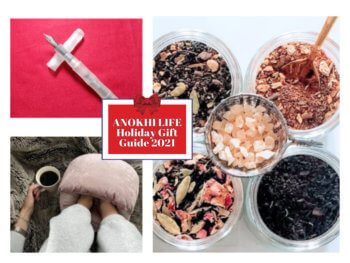Secrets Revealed from the FGI-LA Panel for Cultivating Your Fashion Brand with Social Networking.
Fashion Group International’s award-winning Los Angeles Chapter heeded the call of industry professionals with their May 20 event : Social Media Secrets, Cultivitaing your Brand through Social Networking.
The esteemed panel of blogging and new media experts included: Macala Wright-Lee, Editor in chief of, FashionablyMarketingMe; Jennine Jacobs, of The-Coveted.com, Crosby Noricks founder of Prcouture.com, and Staci Riordan, FGI-advocate and fashion attorney c/o Fox Rothschild.
And, according to the panel, “the fashion industry has fallen behind the curve” when it comes to adaptation to the power of Social Media Networking. Late adopters still clinging to one dimensional floor front transactions, are finding it harder to ignore modern-day influences currently shaping the fashion retail business.
If you are among the percentage of the population who still does not have a social media account, likeFacebook, Twitter or Foursquare for your fashion business, keep reading.
“Social Media is going to revolutionize the fashion industry “ Staci Riordan
Gone are the days when systematic supply chain protocols are paramount to operating your apparel business. With social media you can find and directly connect with passionate customers to drive that sale, from the palm of your hand. Think of social media as another distribution outlet for your product. And if you’ve been in the business of fashion long enough, you know what a direct-to-consumer sale can do for your profit margins.
Fun fact: Not all fashion brands are lacking in social media savvy. Did you know that American Apparel makes 25% of revenue from online strategies alone?
“It’s not overnight and it’s not free. The investment is your time.” Macala Wright-Lee
The return of investment (ROI) on your time invested in social networking is a double-pronged approach:
1. A direct sale (i.e a coupon promotional code which takes you from Tweet-to-Sale).
2. Qualitative Value brand awareness and affinity, repeat purchase, growing a database of people to communicate with over time.
From a marketing standpoint, social networking can help you get your business from
Phase one: building brand awareness; to Phase 2: converting awareness into sales.
Which Social Networking Tools are Right for you?
It’s comforting to know that you don’t need to be on multiple social networking sites at once. Find a marketing strategist to help pinpoint the communities that works for you. Figure out your sweet spot and read up on etiquette for each social tool- to ensure that you are not driving your customer base away.
With Facebook, you can create a fan page, or group for your brand that reaches out to your customer database, or “friends” with updates, promotions and messages.
Think about this: What value do you have to offer? Why would someone join your face book page?
With Twitter you gain “followers” instead of friends. The updates are more frequent, but word count is limited. The pace is set at “real time” with Twitter- which can be advantageous for an immediate call to action. (i.e tweeting about a sale as its happening can drive more people to your store during sale hours).
And more recently, Foursquare is an excellent tool for location-based marketing. It helps you regionally target followers and friends in your area. (i.e, if you notice customers have “checked in “at a nearby location, you can post a discount or sale offering for the afternoon to entice them to drop by your store).
“Think of your social media avatar as the ‘human face’ of your brand.” Jennine Jacobs
There is no longer a curtain between customer and designer-with this new interactive approach to marketing. Real people want to connect with other real people. Having a story or human element attached to your brand will give it the legs to keep moving forward season after season. Not to mention, it will give bloggers and journalists a reason to spread the word like wildfire. And going “viral” on the internet is like hitting the jackpot.
Questions to think about when cultivating your brand voice, concept and persona:
Who is the face behind your brand?
What is your brand story/key differentiator?
Who is your target customer?
How are you going to communicate visually and verbal about your brand persona?
Remember, with your social avatar, be authentic about who you are- think of your brand as being more than just business. When tweeting or blogging, feel free toss a few personal updates into the mix. Transfer real life communication and conversation into social media technology. Go beyond the direct sale channel and build a community of people who are committed to you and to support what you do.
Tips for getting started with social networking:
– Identify and reach out to people who already love your brand.
– Use Passion. If you are passionate about your brand, consumers will follow suit.
– If you are too busy to create your own avatar, find an internal blogger to represent your company (younger employees usually have a pulse on social media).
– Stay abreast of what your competitors are doing online.
– Stay on top of the guidelines, restrictions and legalities appointed by the FDA
– Work on building relationships with 5-6 bloggers who will help spread the word. Remember; when you connect with one “friend” or “follower” you also potentially connect with their networks.
– When starting out, sometimes it helps to listen and learn. Keep an eye on what others are talking about, and what they are saying about your brand.
Your subscription base should be quality over quantity. It’s not always about how many friends or fans you have. It’s better to have a smaller, passionate group of supporters vs. a massive, complacent following.
Do’s for starting your own blog:
It’s often easier to have a blog component built into your already-established site where you can monitor and manage it on your own domain.
If you are going about social networking on your own, do your research. Know your customer and demographic. Learn where they spend their time online and figure out the patterns in their online behavior.
Do Build specific content designed to convert those customers to take specific action.
Do Assign specific goals around different marketing campaigns.
Do Track and report your strategies- did you hit your goal? If not modify and optimize over time, Alternate between a combination of direct sales strategies and building brand affinity.
Do Create your own personality-have fun, be a thought leader and be consistent (i.t tips for Tuesdays) This drives repeat, or what is known as “sticky” traffic to your site.
Do Monitor and pay attention to comments and feedback on your blog- With technologies like Google Analytics – a program that allows you to regionally asses where your website traffic is coming from-you can monitor and target specific consumer behavior.
Do Put your blog on your own domain vs. a blogspot.
Do make your blog site compatible with mobile applications. The percentage of online users accessing the internet via hand-held devices is growing exponentially.
“Social networking is circling back toward nurturing relationships offline.” Crosby Noricks
The Future of Social Networking:
The evening tapered off when panel predictions reveal that a wireless, mobile future awaits us. More and more people are experiencing the internet on-the-go. Products like IPhones, Ipads and mobile applications are creating a demand for M-commerce (the buying and selling of goods and services through wireless handheld devices).
Wireless communication and integrated technologies lend themselves to location-based marketing, and experimentation with augmented realities.
And as the foreseeable consumer becomes fixated with instant gratification, will begin to see a crossover between fashion, entertainment, and social media. For example, if you’re watching a video online, you’ll be able to buy merchandise featured in the movie, on demand. Or perhaps if you notice products you like on a city billboard, a press of a button on your PDA can order and ship the item to your address.
In an ironic twist, online experiences will now begin to drive offline encounters and social networking will soon become a holistic approach to marketing campaigns and online communication.
Thank you to the panel and everyone at FGI-LA for the education.
Source: foxrothschild.com, twitter, the-coveted.com














































































































